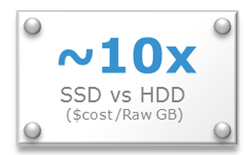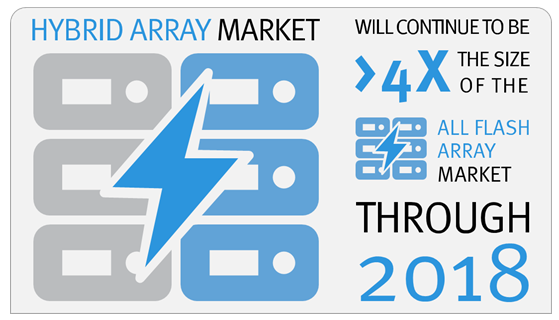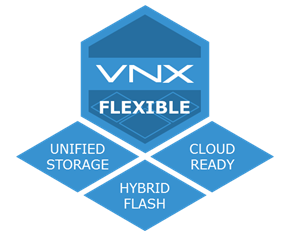 Let’s face it; the use of flash drives in enterprise class storage arrays is growing at a very healthy rate. This will only accelerate with improvements in flash drive endurance, increase in capacities and with the continued downward movement in flash drive pricing and especially with the advent of flash optimized features being delivered by the arrays (that further address both endurance and effective costs). So, why would you consider anything else but an all flash array?
Let’s face it; the use of flash drives in enterprise class storage arrays is growing at a very healthy rate. This will only accelerate with improvements in flash drive endurance, increase in capacities and with the continued downward movement in flash drive pricing and especially with the advent of flash optimized features being delivered by the arrays (that further address both endurance and effective costs). So, why would you consider anything else but an all flash array?
 Everything being equal, an all flash array is usually the answer to most transactional workloads and EMC’s XtremIO is taking the market by storm.
Everything being equal, an all flash array is usually the answer to most transactional workloads and EMC’s XtremIO is taking the market by storm.
BUT not everything is equal. Budgets are tight, and getting tighter, IT spending is being scrutinized more and more and you are expected to do more with less. There is certainly an argument to be made for a system that starts at a lower price point and delivers unified capacities in a small space.
All flash arrays (AFA) deliver phenomenal performance and allow architects to provide new approaches to old problems, allowing storage solutions to allow all data services to be turned on all the time, without any performance or latency impacts, as well as highly efficient protection mechanisms that go beyond legacy hardware based RAID implementations. This means, you should expect reliable data reduction services to reduce the effective $/GB without impacting your performance.
So why a hybrid flash array? Because not all data should be treated equally and not all data benefits from data reduction. Hybrid flash arrays mix flash drives, to deliver performance (IOPs) and traditional hard disk driver (HDD), to provide the economies of scale ($$ and capacity) all in one array. Sure, it’s necessary to understand the workload to ensure that the hybrid array is a fit for your application (90% of the time it is), things like data skew, IO denisty, latency requirements, but the hybrid flash array in most cases delivers the lowest cost per GB irrespective of workload type or application. There are hybrid flash arrays that support block based applications, some that support file based application and others that support both block and file based applications. Typically, AFAs have been focused on block based applications, although there are some exceptions, exceptions like the VNXe3200 all flash configuration an an all flash VNX that support both bock and file based applications. It’s fair to say that hybrid flash arrays are seen as the industry’s popular workhorse, the go-to storage array for consolidating mixed application workloads that use flash drives to deliver performance and high capacity drives to drive down the overall cost per GB – irrespective of data de-duplicability or access method.
 Source: IDC Worldwide all flash array and Hybrid flash array 2014-2018 forecast
Source: IDC Worldwide all flash array and Hybrid flash array 2014-2018 forecast
Why the VNX unified hybrid flash array?
- No compromise economics
- Unified storage support
- Flash performance at the cost of disk
- Fully automated storage tiering (FAST)
- Deep VMware, Microsoft Hyper-V and Citrix integration
- Mixed workload support (Oracle, SQL, Exchange, SharePoint, SAP, Home directory, etc.)
- Hybrid cloud ready
- Efficient scaling of capacity up to 6PBs
- Flexible deployment options
- Designed to deliver 5 nines availability

Now there you have it, hybrid flash arrays deliver on the simple economic message irrespective of workloads. VNX unified hybrid flash arrays deliver flash performance at the cost of disk and they integrate incredibly well into our customer’s VMware and Microsoft ecosystems.
And don‘t just take my word for it – IDC paper on Hybrid-Flash Arrays Enable Businesses to Benefit From Enterprise Storage Consolidation!